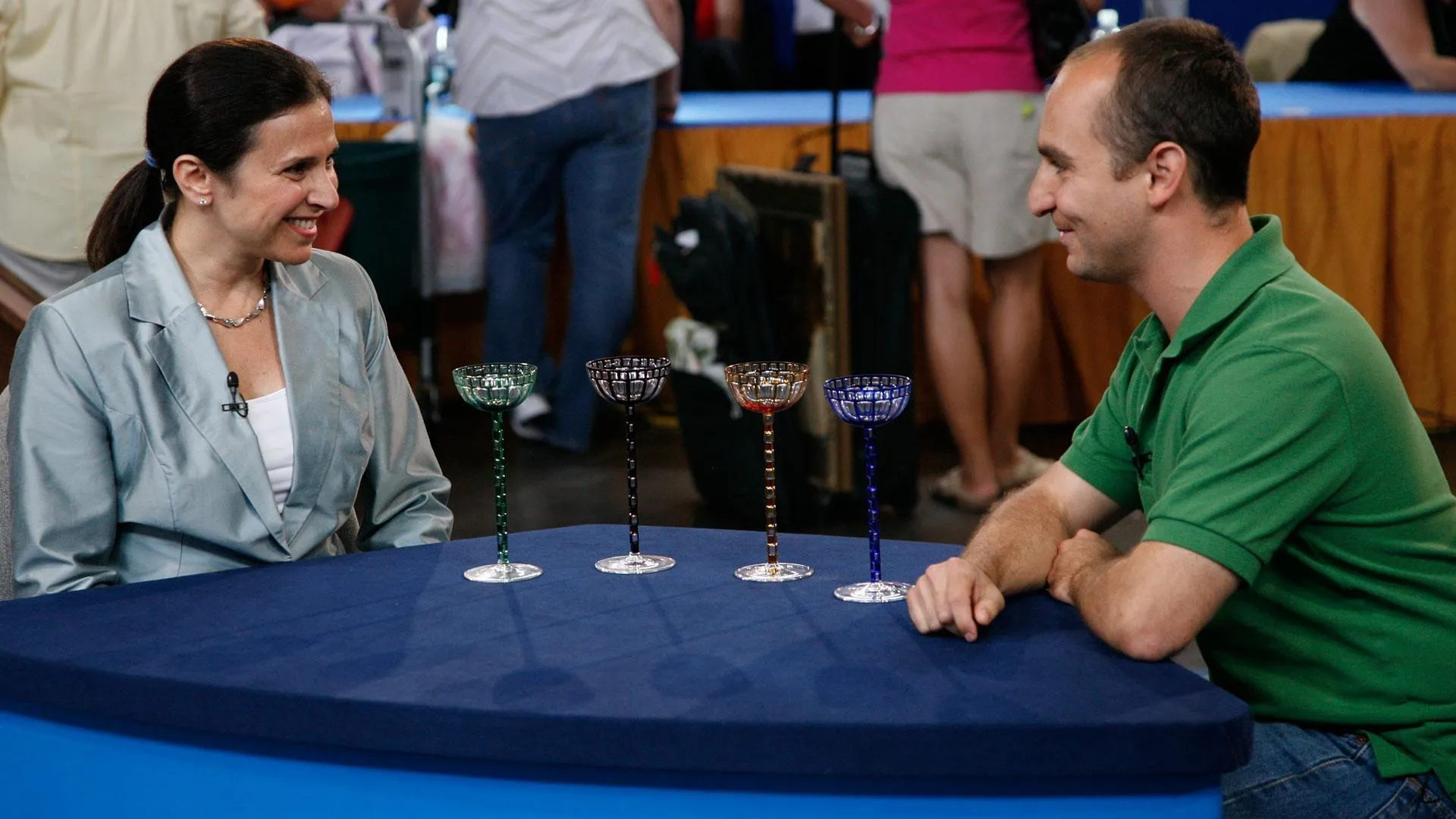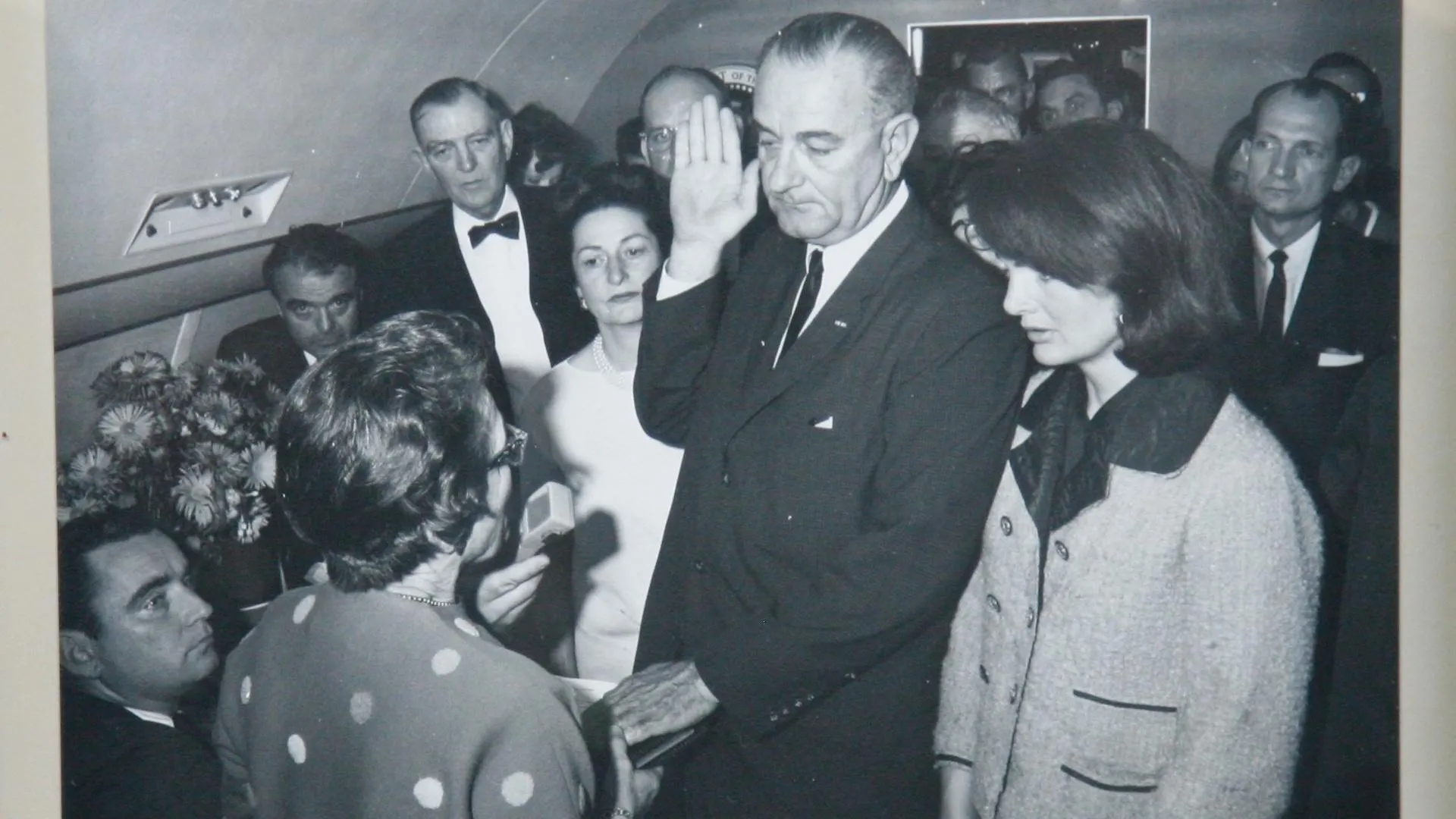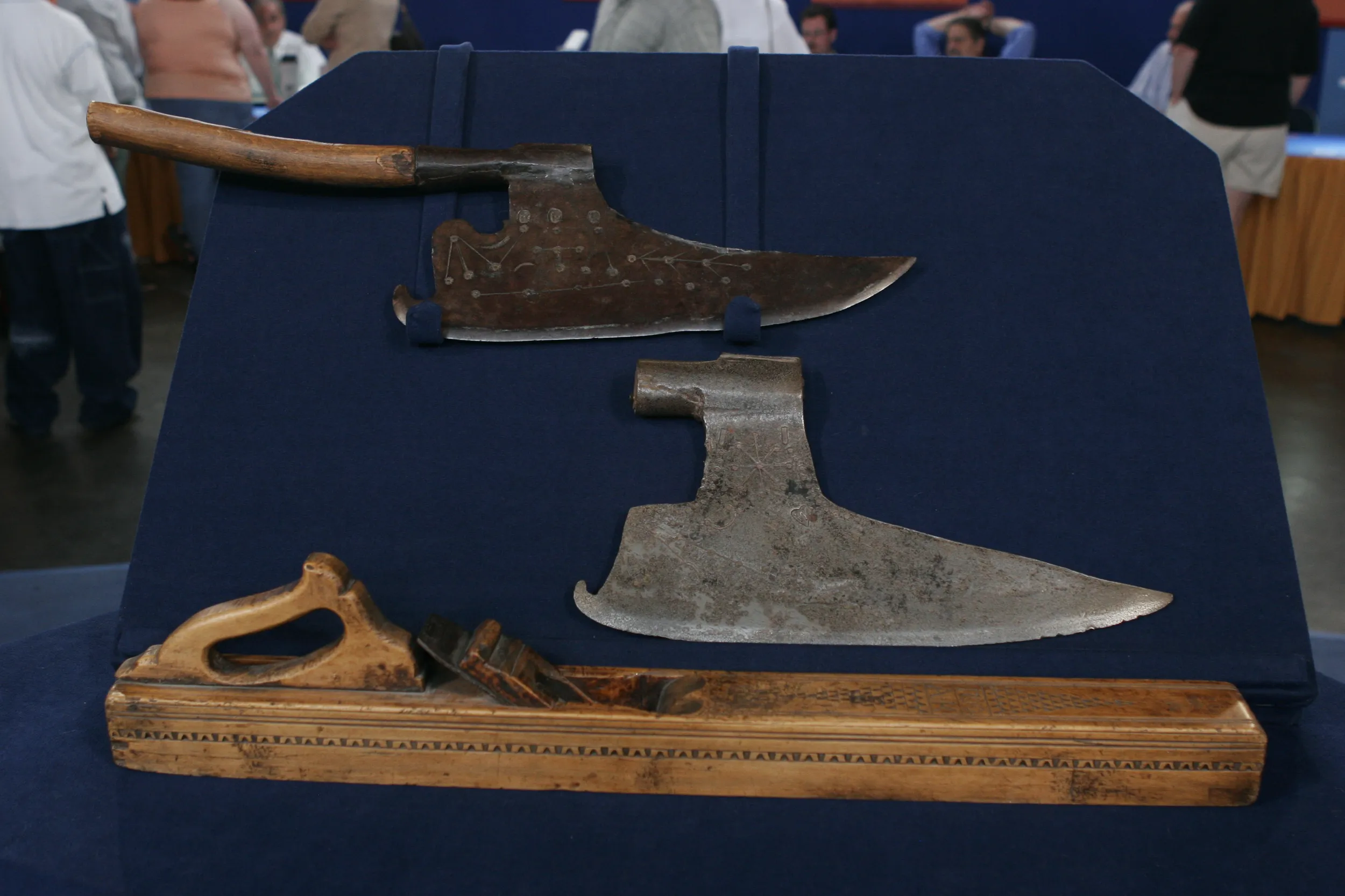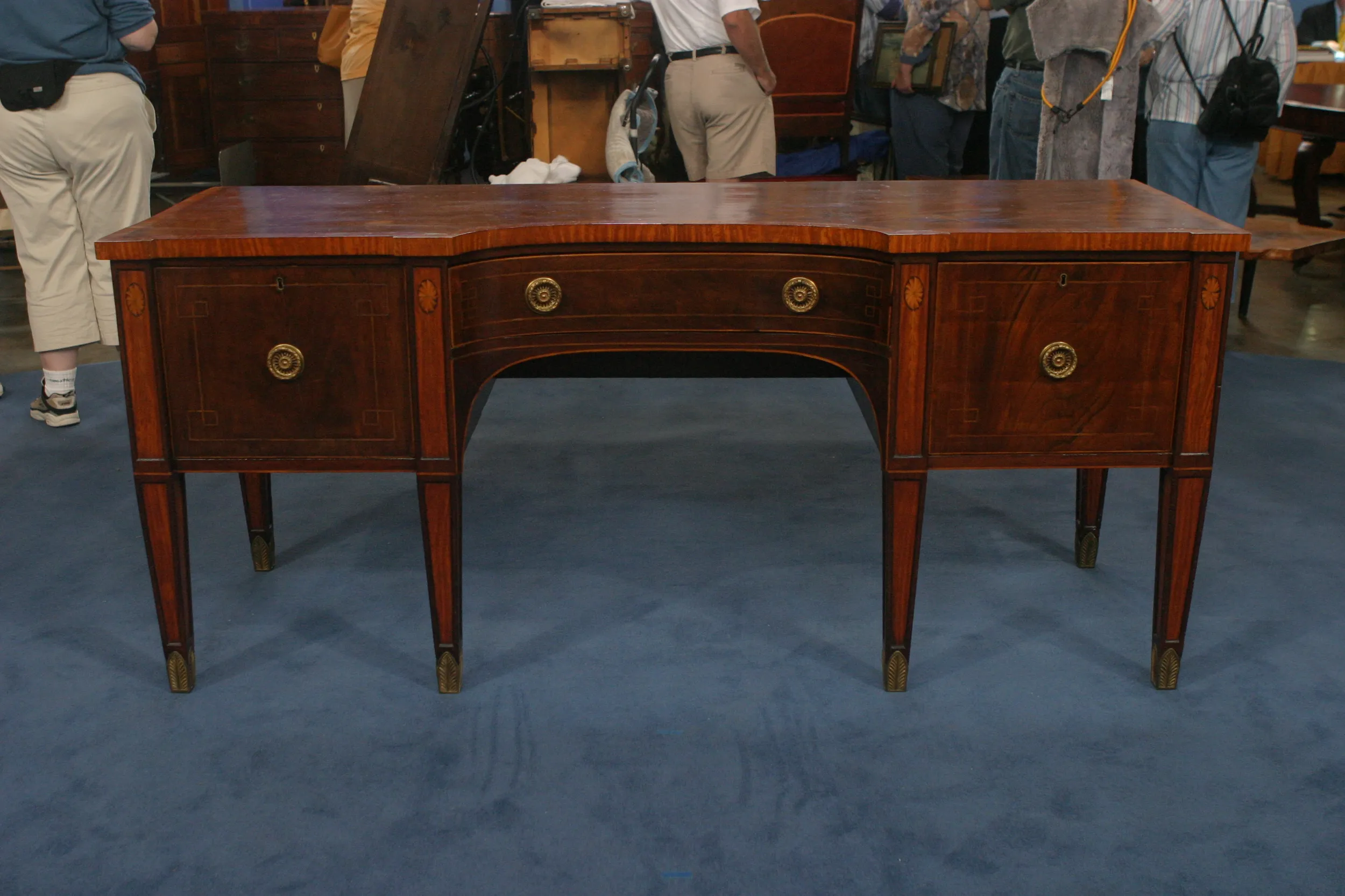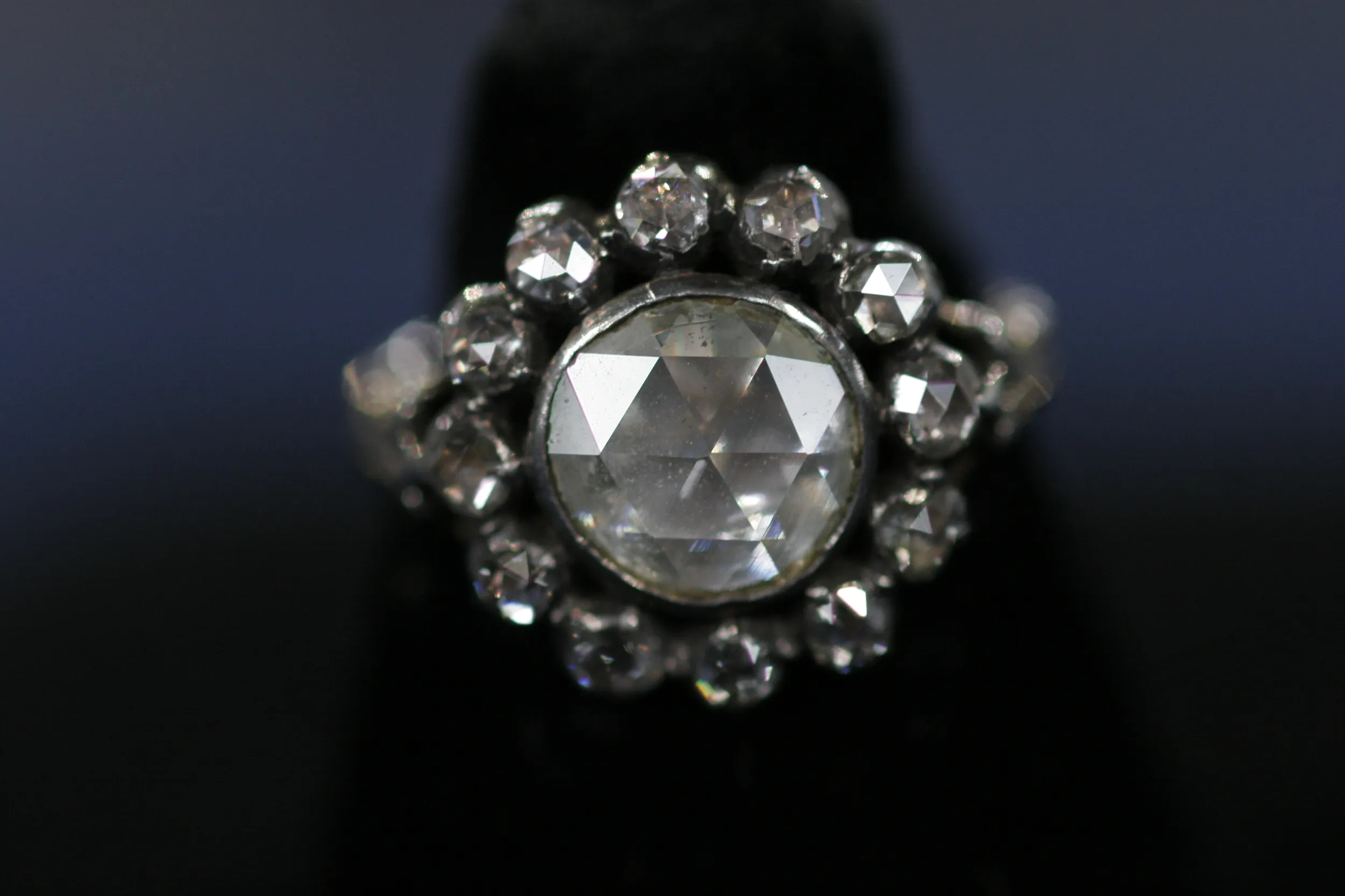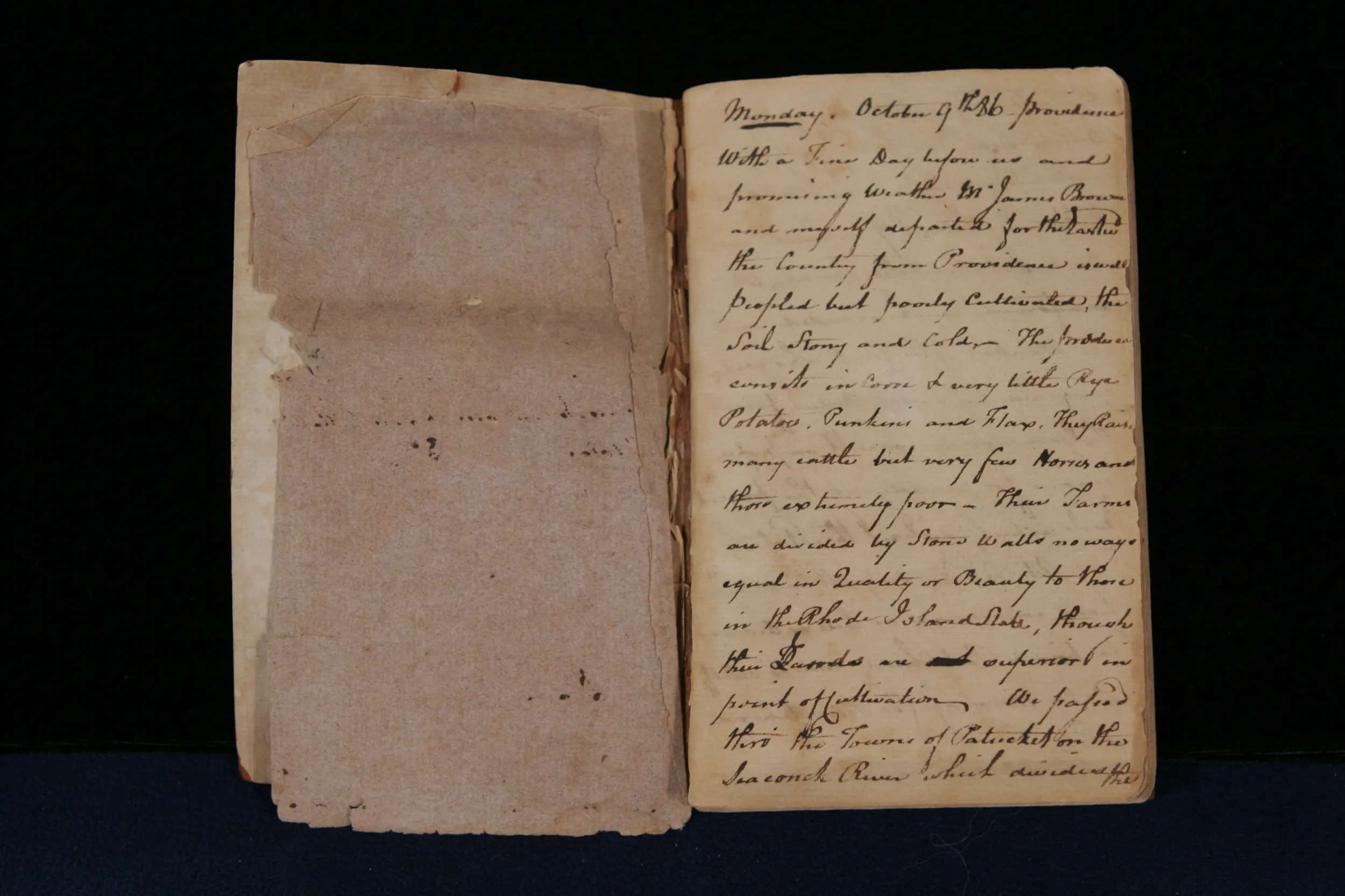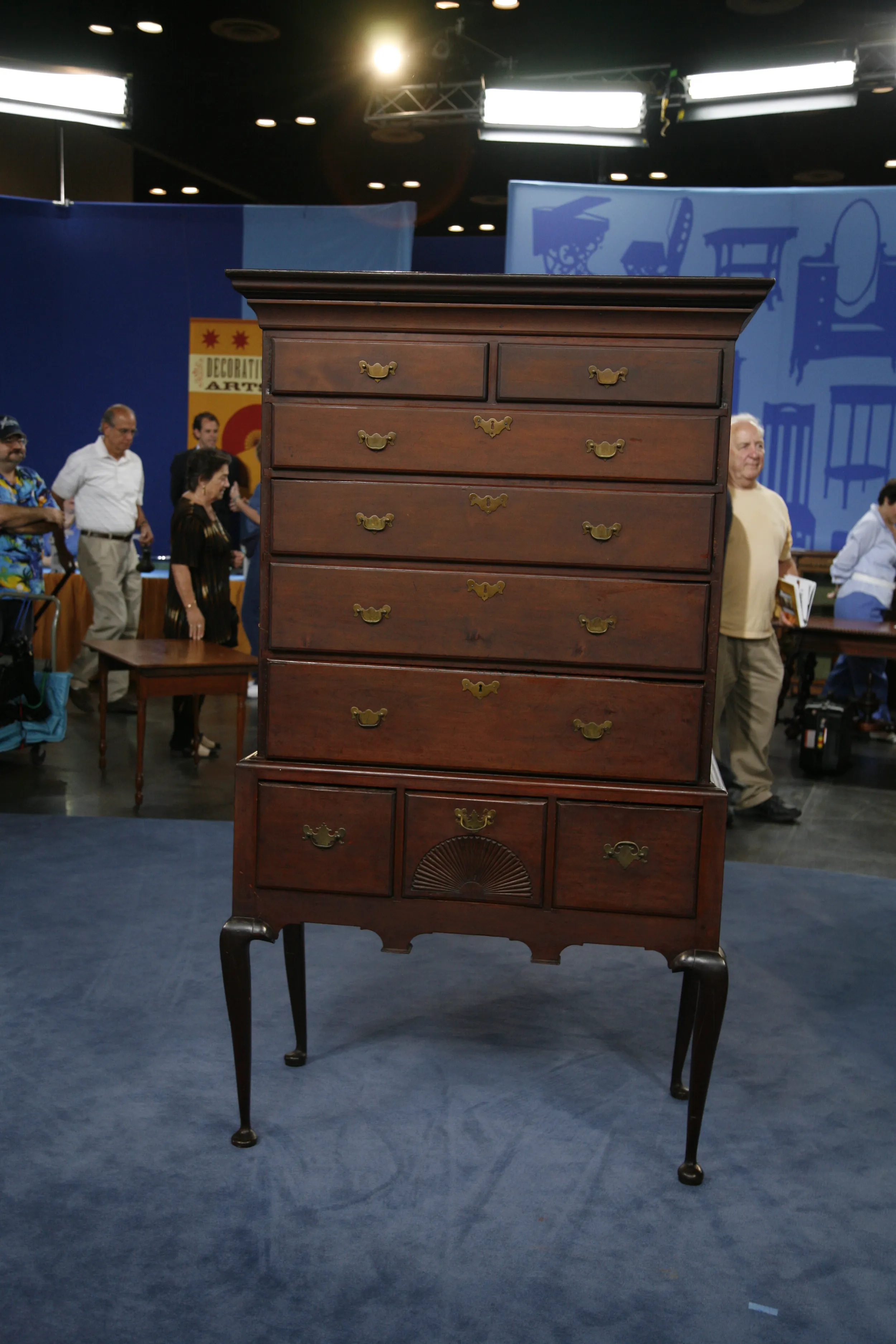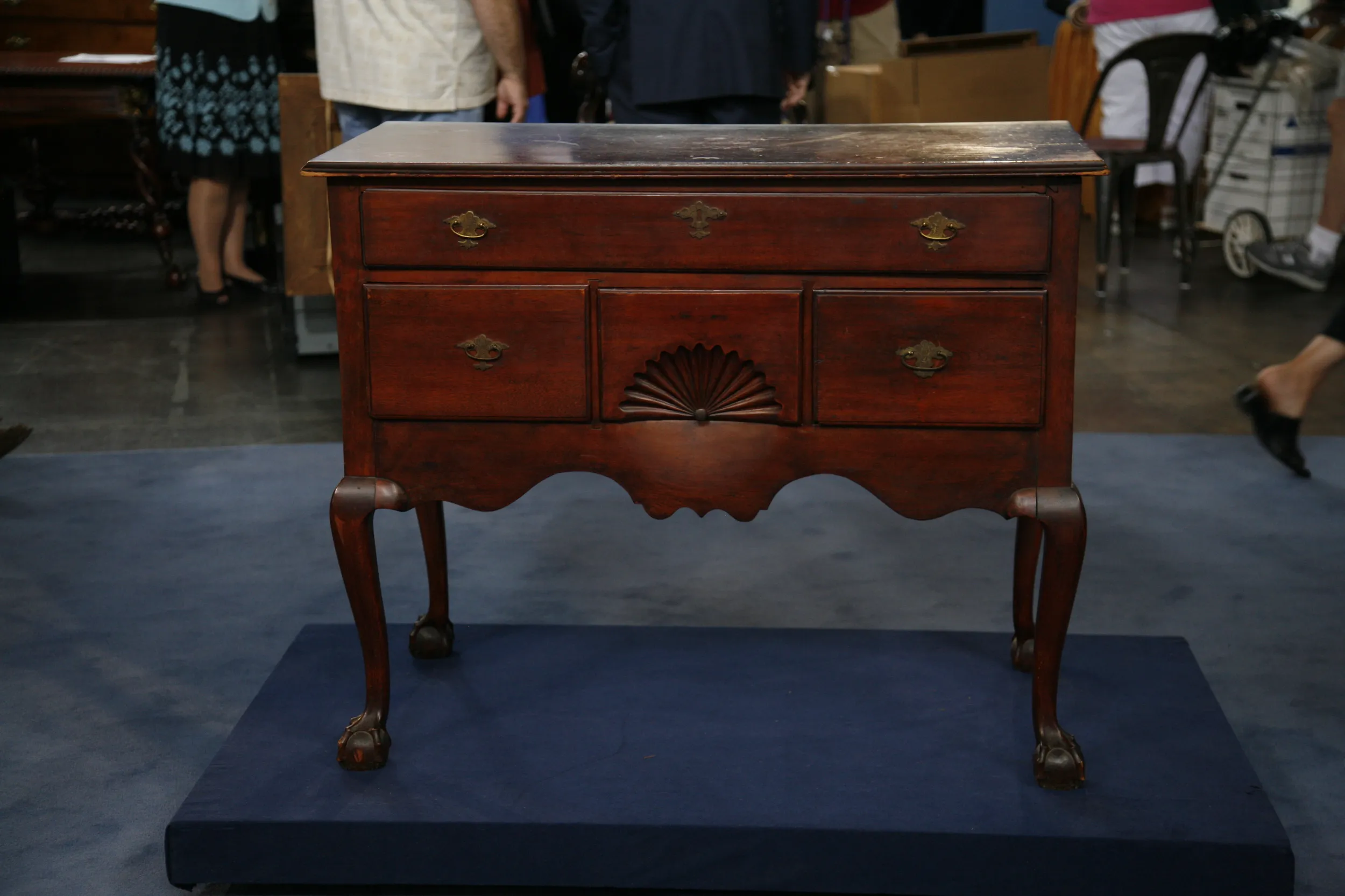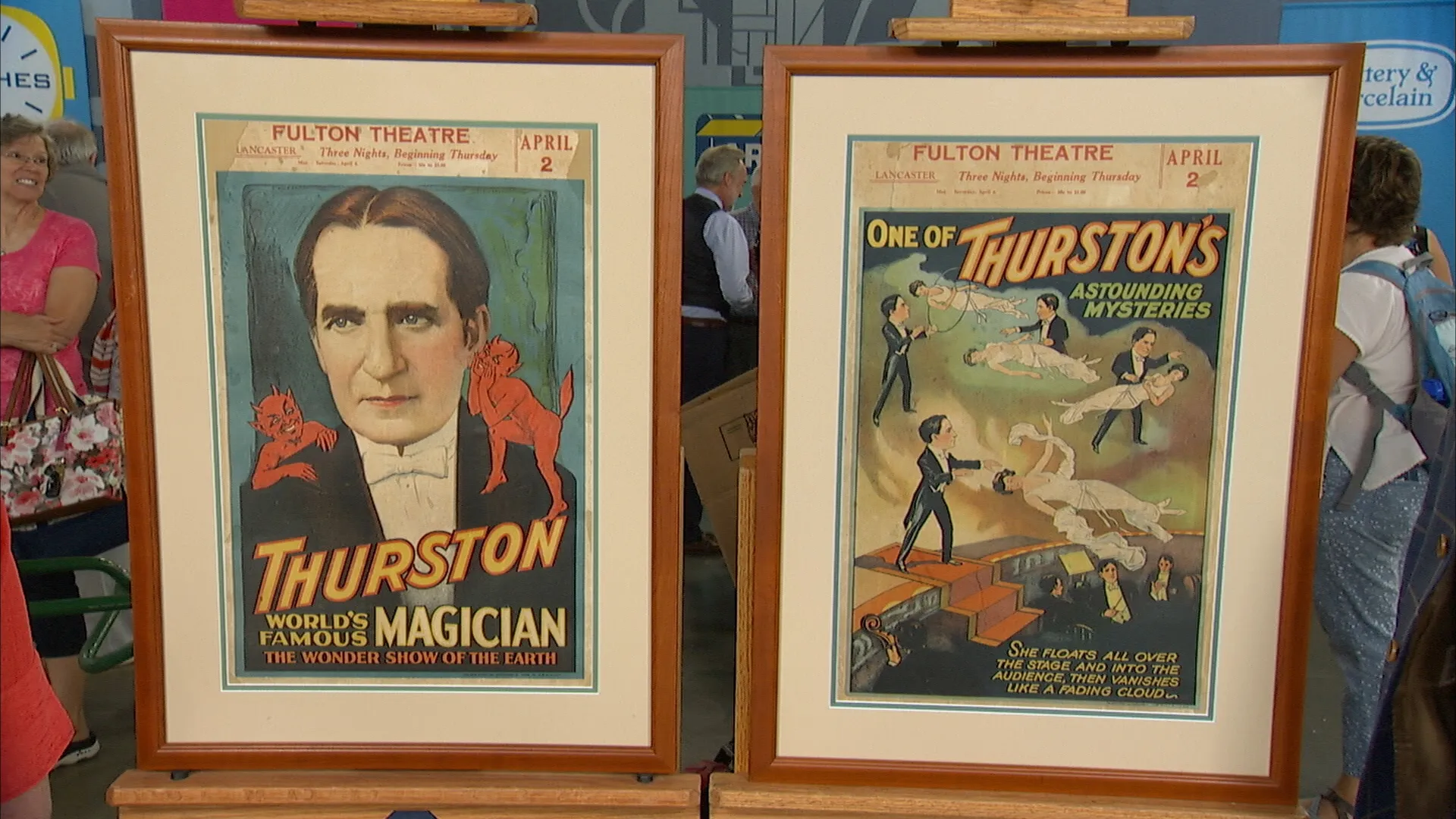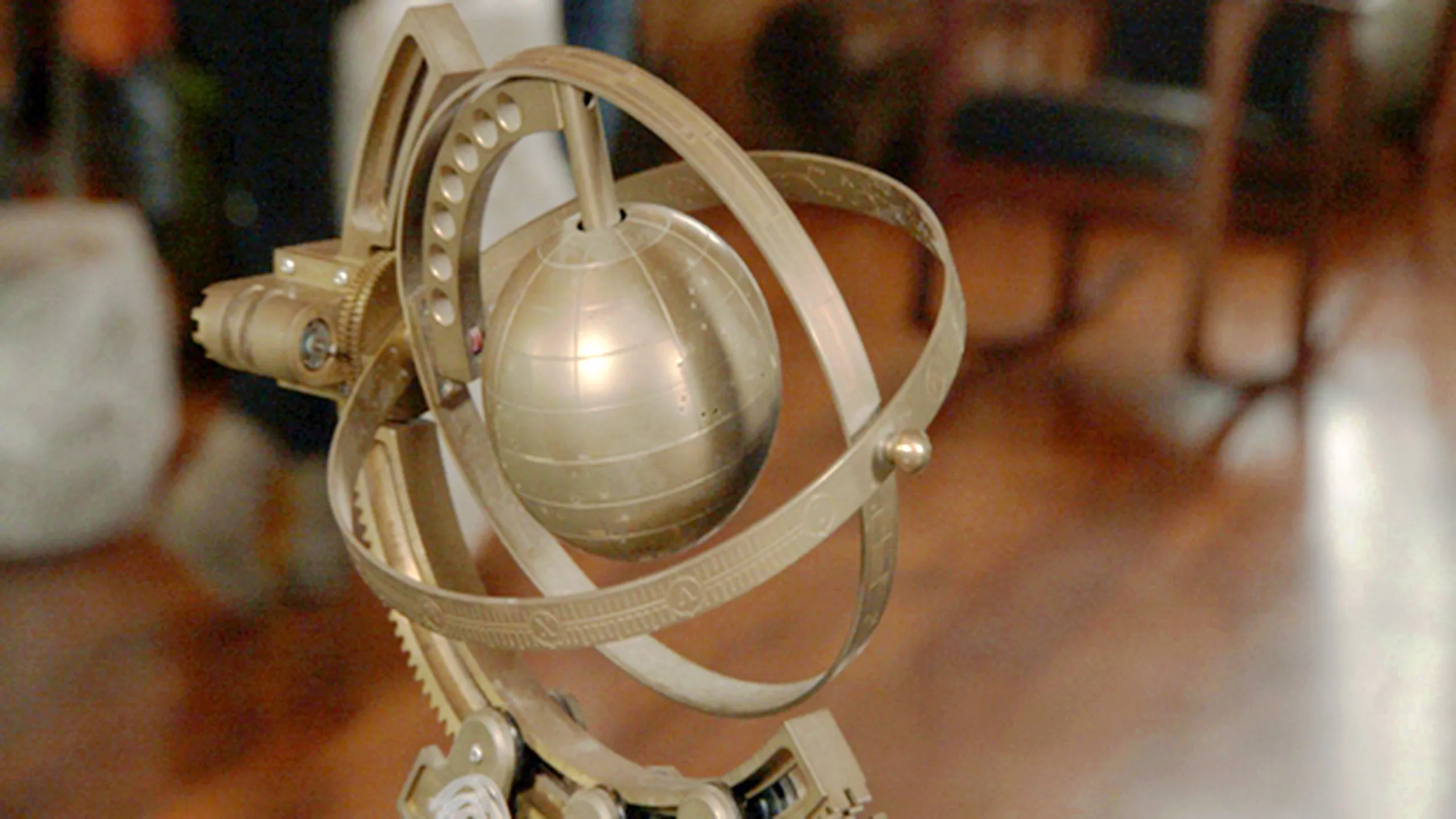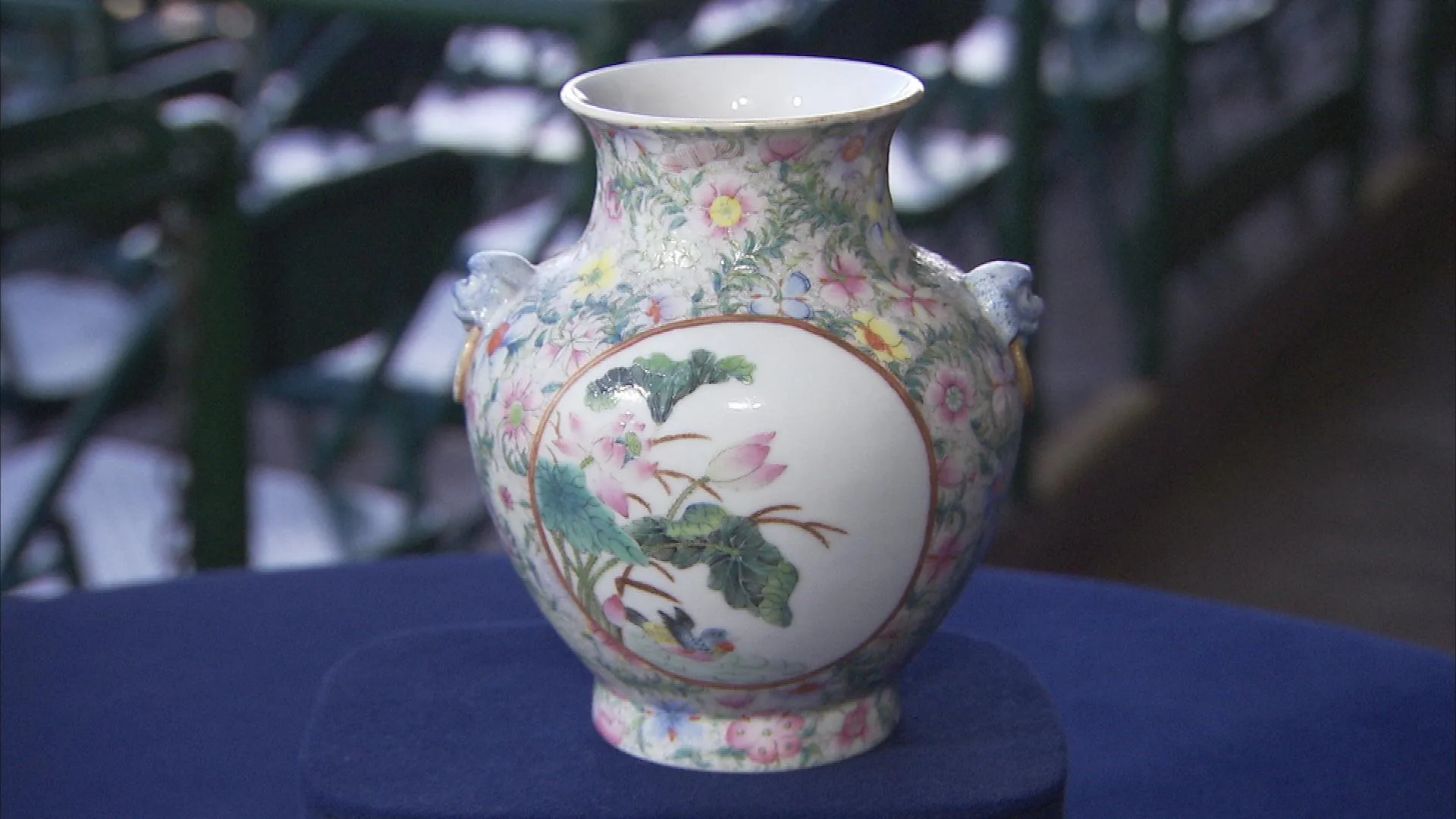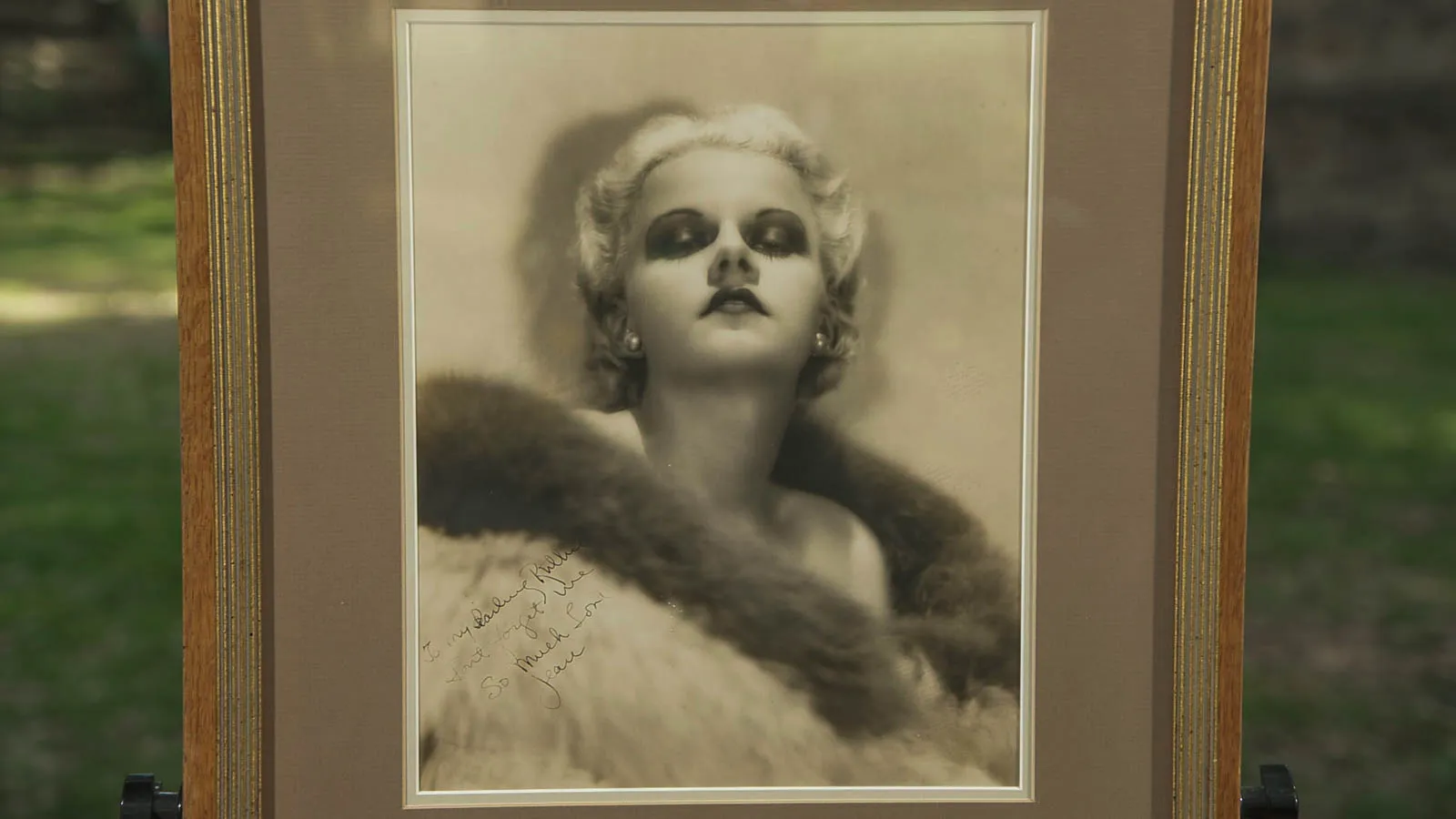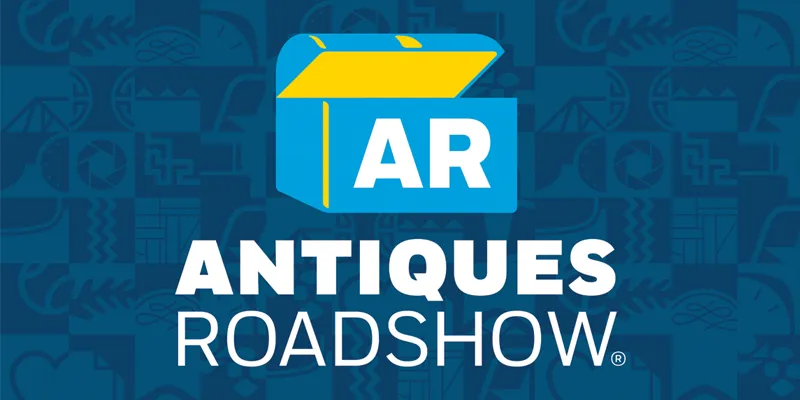GUEST: My mother inherited them from her father, who got them from his father.
APPRAISER: Let's start with this high chest, the highboy. I know you know what's hidden right here, right?
GUEST: And I figured you did, too.
APPRAISER: I figured it out. But, you know, that document drawer, or little cornice drawer.
GUEST: Mm-hmm.
APPRAISER: Now, a really smart burglar would know that was there and know the money was there, right?
GUEST: They weren't fooling anybody then.
APPRAISER: They weren't fooling anybody. It's made of birchwood.
GUEST: Birch.
APPRAISER: Which we do see in New England. So it's made in two sections. You have these nice, molded drawers, right? With the original-looking brass-- Queen Anne brasses. And then you have this bottom section with a beautiful carved fan. That's a real nice touch. And it would have cost a little extra in the 1740s.
GUEST: Sure would.
APPRAISER: And then this nice, arched valance here, where there would have been a little, probably a drop at one time, and then the legs. Now, these are actually added on. They've been spliced in. And do you see that, that split? And do you see it's on every single one? And there are two pins on each side attaching it. So, at some point, the legs rotted or they snapped.
GUEST: (murmurs)
APPRAISER: And some family member of yours worked on them, which is okay. It would have had a, probably a more of an "S" curve, these... See how these are a little bit straight-looking? So that's something that does affect value. The piece is worth, in a shop, with the spliced legs, probably about $1,200 to $1,500, okay? If it didn't have the spliced legs, the legs would be curvier. Because of the old finish and the original brasses, it would probably be, like, $12,000 to $15,000, okay?
GUEST: Well, there's a major difference.
APPRAISER: There's a big difference, I know-- it is, I know.
GUEST: Yes.
APPRAISER: But you know something? Come on over here.
GUEST: Sure. Well, at first, my mother thought they were matched, because of the shell design.
APPRAISER: Okay. Because of the shell, right.
GUEST: But you can see the claw legs make it a completely different piece. This piece was with my grandfather.
APPRAISER: Okay.
GUEST: And it was left over from his father's home, which burned down. But they, they survived.
APPRAISER: So they survived. Now, you have a piece, looking at it from here, that does appear a little too wide, and this skirt is very extreme, and it, it's not a typical skirt for Connecticut. And these are basically more Philadelphia-shaped feet, claw-and-ball feet, for a piece that's supposed to be made up in Connecticut. The interesting thing is, you have the original engraved brasses on the drawers. I mean, those are 1720 to '40, original engraved brasses. If you look at these drawers, it's, basically looks like a birchwood, and secondary wood is poplar, which is typical of Connecticut. Now, I'm going to show you something around the back. That's the original back. But look over here, Terry. You see those marks? I don't know if you do any woodwork.
GUEST: Oh, yeah.
APPRAISER: Those tool marks are chatter marks from a machine saw, from an electric saw.
GUEST: Oh.
APPRAISER: So this piece, you have some old parts, like the drawers and the backboard, but... And I'm going to ask Ron to run in here and help me flip this over. Thank you, Ron. That's my buddy Ron. The skirt here has machine tool marks. You can also see some machining over here from a, from an electric tool. So we know that none of, none of this is original. If we look down at the inside of the piece, Terry, that leg that you saw-- you see that color difference?
GUEST: Oh, yes.
APPRAISER: So, new legs, and, and these skirts are all new. And, if you look down at that top and see the difference, you have a cherrywood top on a birchwood case. And you see the difference in color down in there?
GUEST: Yes, absolutely.
APPRAISER: Terry, one really neat thing is that the original-- probably original-- chalk marks are here from assembling the backboards to...
GUEST: Quite a number, huh?
APPRAISER: Isn't that cool?
GUEST: That is.
APPRAISER: That's a really nice thing to, to have.
GUEST: Yeah.
APPRAISER: Let's flip it back up. Thanks. Thank you again, Ron.
CREW: You're welcome.
APPRAISER: And we're going to spin this around. Connecticut lowboys can be very valuable. They can go up to $20,000, $30,000, $40,000, $50,000. The condition affects the value drastically.
GUEST: Sure.
APPRAISER: It's a fragment of what it was. So it's probably worth about $800.
GUEST: $800.
APPRAISER: But it's priceless to your family.
GUEST: It is.

